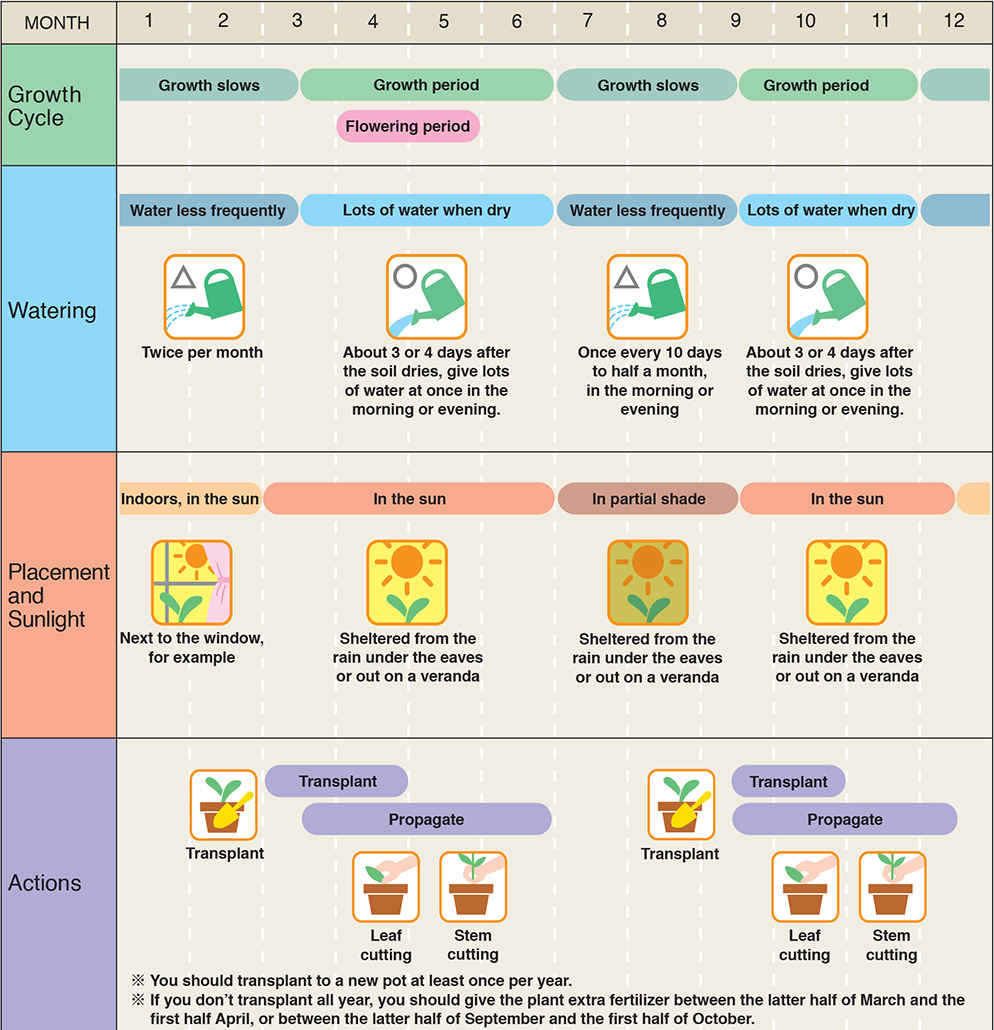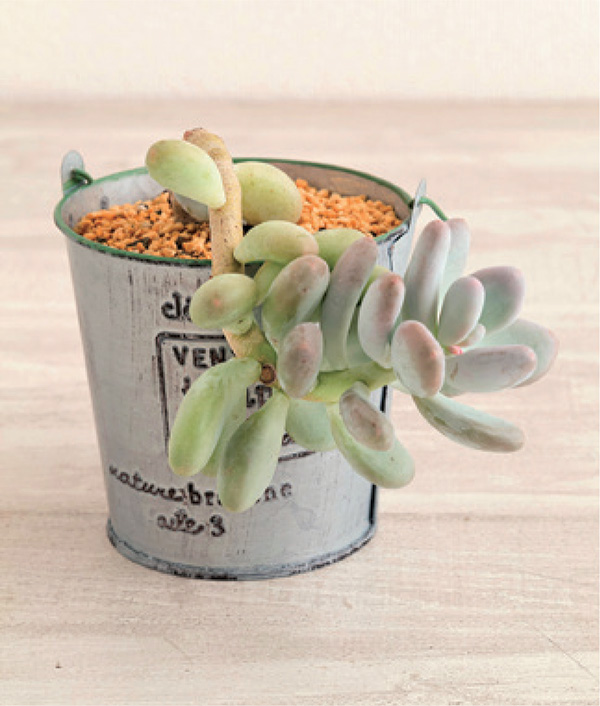Spring/Fall Types
Pachyphytum oviferum “Hoshibijin”

Characteristics of Hoshibijin
Pachyphytum means “thick plant,” and as the name implies, these plants feature round, thick leaves. Hoshibijin is a representative variety for the genus, and its delightful shape is a big hit. The surface of the leaves is beautiful, as if it had been lightly brushed with moon dust; however, the powder comes off to the touch, which leaves unsightly spots, so handle the plant carefully.

Points to Check when Buying
Avoid buying stretched plants where there is a lot of space between the leaves and where the leaves are a pale yellow-green color.

Soil Composition
Mix 5 parts small-grain Akadama, 3 parts Kanuma soil, and 2 parts mulch for a ratio that has good drainage, water retention, and breathability. Add a layer of gravel like large-grain Akadama or pumice to the bottom of the pot.

Fertilizer
When you transplant a succulent, add a layer of granular base fertilizer on top of the layer of gravel.
How to Transplant
The stem grows easily and tends to fall over, so take a stem cutting for transplanting. Remove any darkened and rotten roots, massage out the old soil, and transfer the plant to fresh soil.

Pour in the slightly dampened new soil. When you have finished transplanting, lightly tap the pot to level the soil and place the plant in partial shade to take root.
How to Propagate
Propagation with leaf cuttings or stem cuttings is simple. To use a leaf cutting, remove a plump leaf from the stem and lay it on top of soil for a new plant to take root and sprout. To use a stem cutting, cut off a branch on the side of the stem and insert it in soil.
Leaf Cutting

Place the leaf you removed from the succulent stem on the surface of dampened soil, and after about 10 days the leaf will begin to take root and sprout. When your new plant has grown 4 or 5 leaves, pull it from the soil, taking care not to injure the roots, and transplant it.
Stem Cutting

Let the cut end of the branch dry out for 4–5 days, and then insert the branch into soil. During the first half month until the plant takes root, keep the soil constantly damp and leave the plant in partial shade. After the plant has taken root, you can care for it as usual.
Key Points for Growing Hoshibijin
This variety is very robust and can be easily propagated. Because the stem grows long so easily, expose the plant to lots of sunlight outside during its growing season and keep its shape compact. If you neglect to transplant, the plant will become root bound as the roots run out of space and grow in circles within the pot. This hurts drainage and air circulation in the soil, and can lead to root rot. Be careful of the soil becoming soggy in midsummer, and take your plant inside on cold winter days to prevent freezing.
Cultivation Calendar

Succulent Advice Q&A
Q The leaves have lost their powder coating. Will it come back?
A The gentle pastel colors of the leaves are part of the charm of this succulent. When the leaves are touched or are exposed to heavy or long-lasting rain, the powder will come off and expose the bare surface of the leaves. When that happens, the powder will not grow back. You will just have to wait for the blotched leaves to fall and be replaced with new ones as the plant grows.


Gentle shape, gentle colors. Its Japanese name, “Hoshibijin” or “Star Beauty,” likens this succulent to a beautiful woman.

A flowering Hoshibijin
Members of the Pachyphytum genus

P. variegata “Azuma Bijin”

P. “Shireiden”

P. “Momo Bijin”